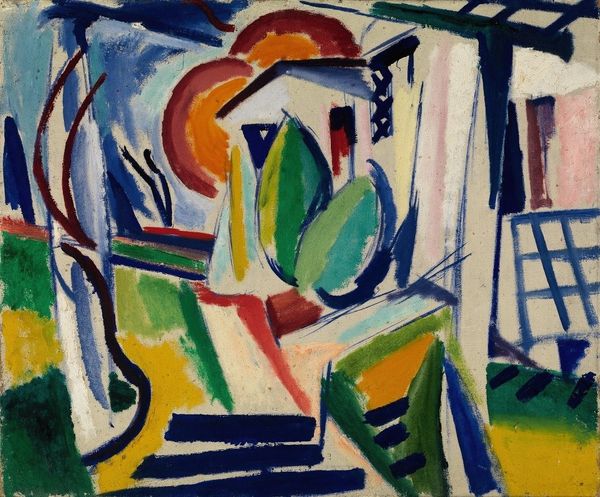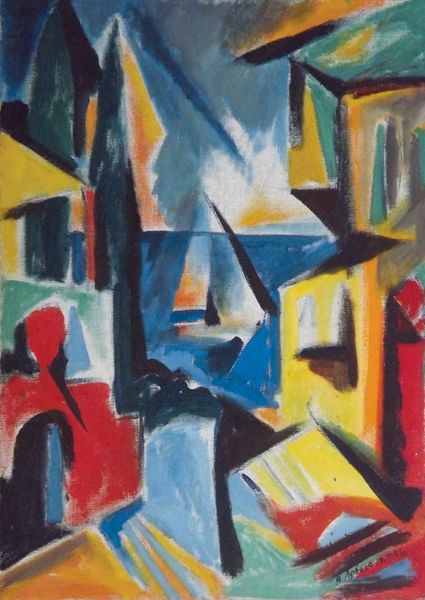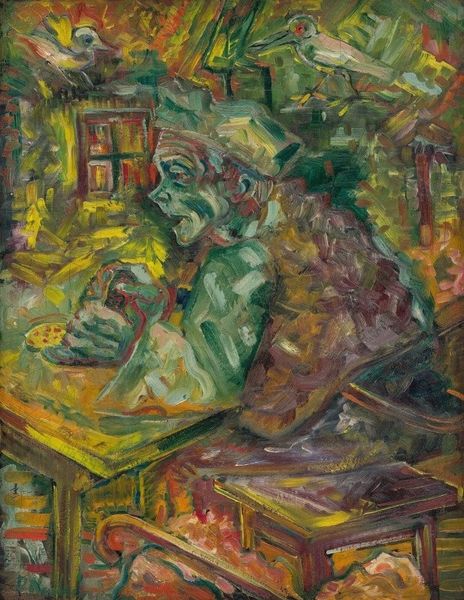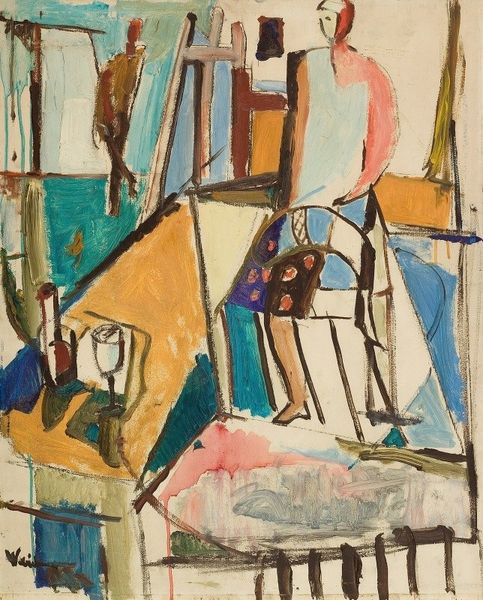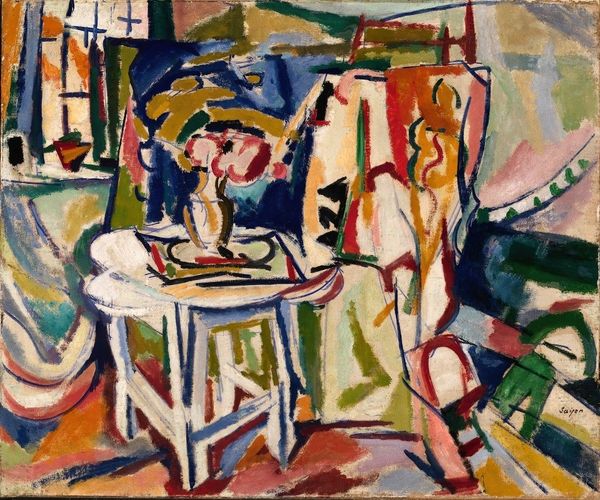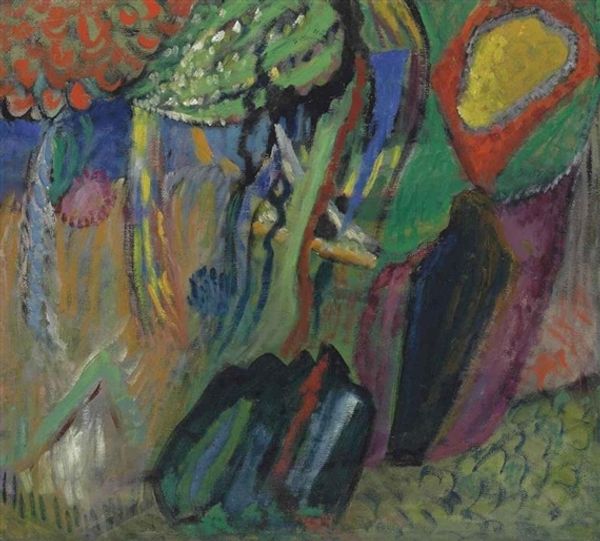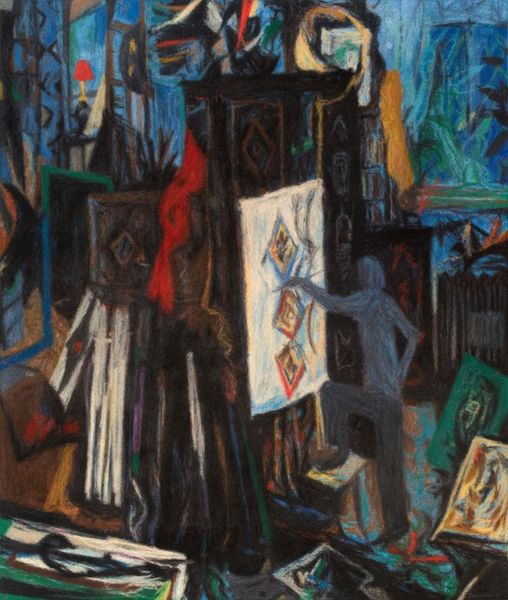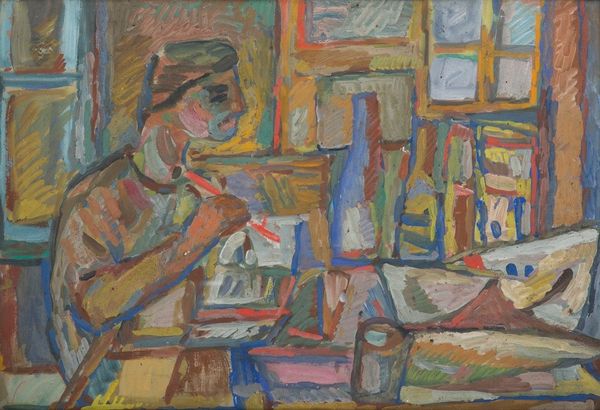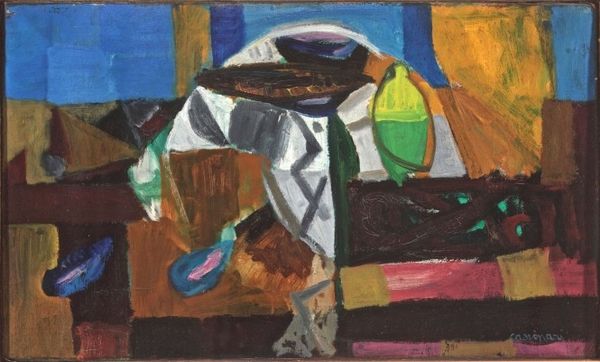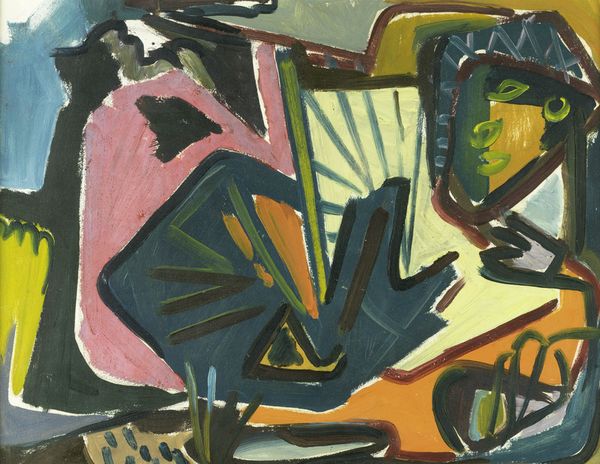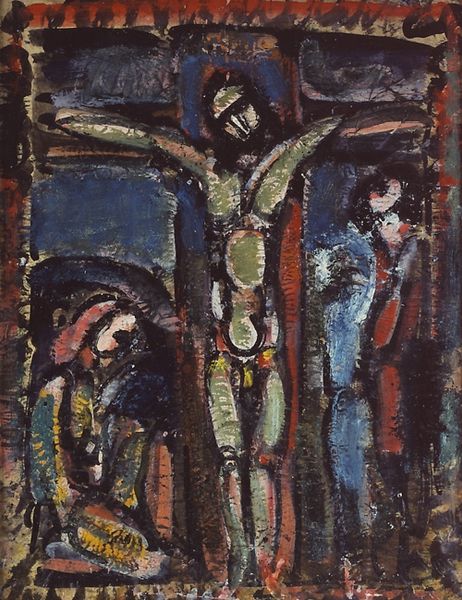
Copyright: Public Domain: Artvee
Curator: Sasza Blonder's 1936 painting, "Mężczyzna z fajką na tle podwórza"—"Man with Pipe in a Courtyard"—greets us with a fascinating puzzle of abstracted forms rendered in oil. Editor: My first impression? A melancholic jazz riff—yellowed like aged sheet music, punctuated by smoky blues. It’s got a definite, if muted, energy. Curator: Exactly. Blonder's masterful fusion of cubist fragmentation and expressionist fervor evokes both a fractured reality and intense emotion. Notice how the figure with the pipe, far from being centered, bleeds into the chaotic backdrop of the cityscape, a tapestry of human figures, geometric shapes, and even…is that a dog? Editor: Absolutely a dog! More importantly, Blonder isn’t just depicting; he’s dissecting. The man isn’t just smoking a pipe, he is an elongated cascade of lines, an exercise in seeing how the object intersects with the surroundings. The buildings appear as though collapsing, twisting... Curator: Or expanding. Consider the spatial ambiguity. The artist deliberately plays with depth. Is it receding into space, or flattening onto the canvas? I feel that’s part of its strength and offers insight into Blonder's emotional landscape, as well as the physical. This interplay makes the eye struggle and lends it that sense of underlying unease, I feel. Editor: The colours do a lot of the emotional work here, too. That somber palette evokes the pre-war period but there is a surprising range that saves it from feeling depressing. And, look, Blonder isn’t afraid to leave portions raw, areas that highlight the very act of painting, that let the medium itself have a voice. Curator: Very true. What feels innovative for me is his almost total dissolving of boundaries, refusing to allow solid lines, for anything—even the characters who populate the work. Instead, everything here feels as if on the verge of turning into everything else. That mutability makes me reflect upon my perception of space. Editor: In the end, Blonder gifts us more than a portrait or cityscape, doesn't he? We get an expression of urban life distilled through feeling—fragmented, flowing, eternally caught in a suspended chord. It asks the question: "are you certain that this is all?". Curator: Beautifully put! And ultimately invites us to look a little harder and, in a way, become participants in its unique vision of reality.
Comments
No comments
Be the first to comment and join the conversation on the ultimate creative platform.
